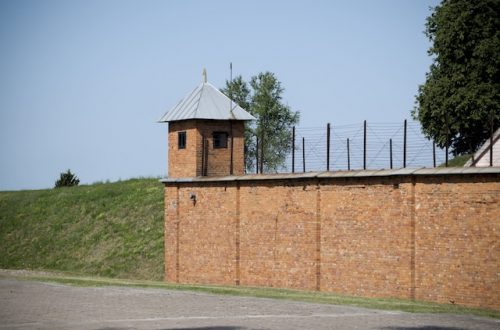-
Kaunas – sidekick of Lithuania and my favorite places to see and be
Kaunas may be Lithuania’s second city in terms of population, but many argue it is the ‘most Lithuanian’ city. Whatever that means. It is undoubtedly true that Kaunas is not as much an international city as the capital Vilnius and therefore has preserved something more purely Lithuanian. Let’s be honest, though. Kaunas is to Vilnius what Robin is to Batman. It’s BarnicleBoy to SpongeBob, Dannii to Kylie, Rocky to Bullwinkle, Weasley to Potter, and David Hasselhoff to a black car, some silicone balloons, or just about any inanimate object. It’s sidekick city. It’s less famous, grabs fewer headlines, has a lower makeup budget, isn’t as pretty, and always seems to…
-
Vilnius: art in public places and permanent exhibitions
Vilnius is full of art. It would be best to let your eyes wander, and the images will pop up from the buildings. You will also meet modern sculptures and incredible interiors dedicated to beloved Lithuanians and foreigners or the free spirit of the world. Hooked by Mindaugas Navakas Mindaugas Navakas loved and still loves surprising others with his urbanistic inventions, and his “Kablys” (the Hook, 1995) on the old Railway Cultural Center building has earned him a national prize. It’s somewhat puzzling because, during that time, the center served as a cradle for contra-culture. You surely get hooked. Kauno st. 52. The Frank Zappa fan club The idea to…
-
The history of Kaunas Fortress and Kaunas Forts
At the end of the 18th c., when Kaunas became the border post of Russia, the Tsar decided to transform the city into a fortress, but the idea materialized only in 1871. Germany finally became united, and there was a need to strengthen the empire’s western borders. In 1880, Tsar Alexander II ratified the Kaunas fortress plan, covering a 15 sq. km area. The work started in 1882-1889, but construction continued until 1915. Stages of construction Construction was carried out in several stages. First, a defense circle consisting of 7 forts and nine batteries, and central fortifications was built. Construction of administrative buildings in the city center, reconstruction, and refinement…
-
Kaunas history: second Lithuanian city was the capital once
The settlement which later developed into Kaunas was first mentioned by chroniclers in 1361. To protect the city against Crusader attacks, a stone castle was built in the 14th c., which later became an important part of the city’s defense system. In 1408, Kaunas was granted Magdeburg rights by Grand Duke Vytautas. Since then Kaunas started developing rapidly, as its importance as a port and a trading center with western Europe was growing. In the 16th c. the first school, public hospital, and pharmacy were built, and towards the end of the century, Kaunas became one of the best-organized cities in the Great Duchy of Lithuania. The economy of Kaunas…








